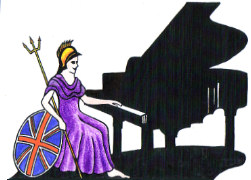Teachers, Accompanists and Piano Entertainers in the UK

UK Piano Page

81 Myddleton Rd
London
Bounds Green, London N22 8NE
England
Piano specialists offering new, used and
13 The Broadway
Woodham
New Haw, Surrey KT15 3EU
England
Covering Kent, Sussex and Surrey from stores in
152 Market Street
Dalton-in-Furness, Cumbria LA15 8RQ
England
40 Irongate
Derby, Derbyshire DE1 3GA
England
Charles Foulds opened the first Foulds shop in
154 Sidwell Street
Exeter, Devon EX4 6RT
England
Founded in April 2007 and following on from the
Music Festival for performers and guests Our 10th
18-06-2022 01:30PM
The Morecambe Bay Piano Group was set up to extend
11-12-2021 02:00PM
The Morecambe Bay Piano Group was set up to extend
08-01-2022 02:00PM
The Morecambe Bay Piano Group was set up to extend
12-02-2022 02:00PM